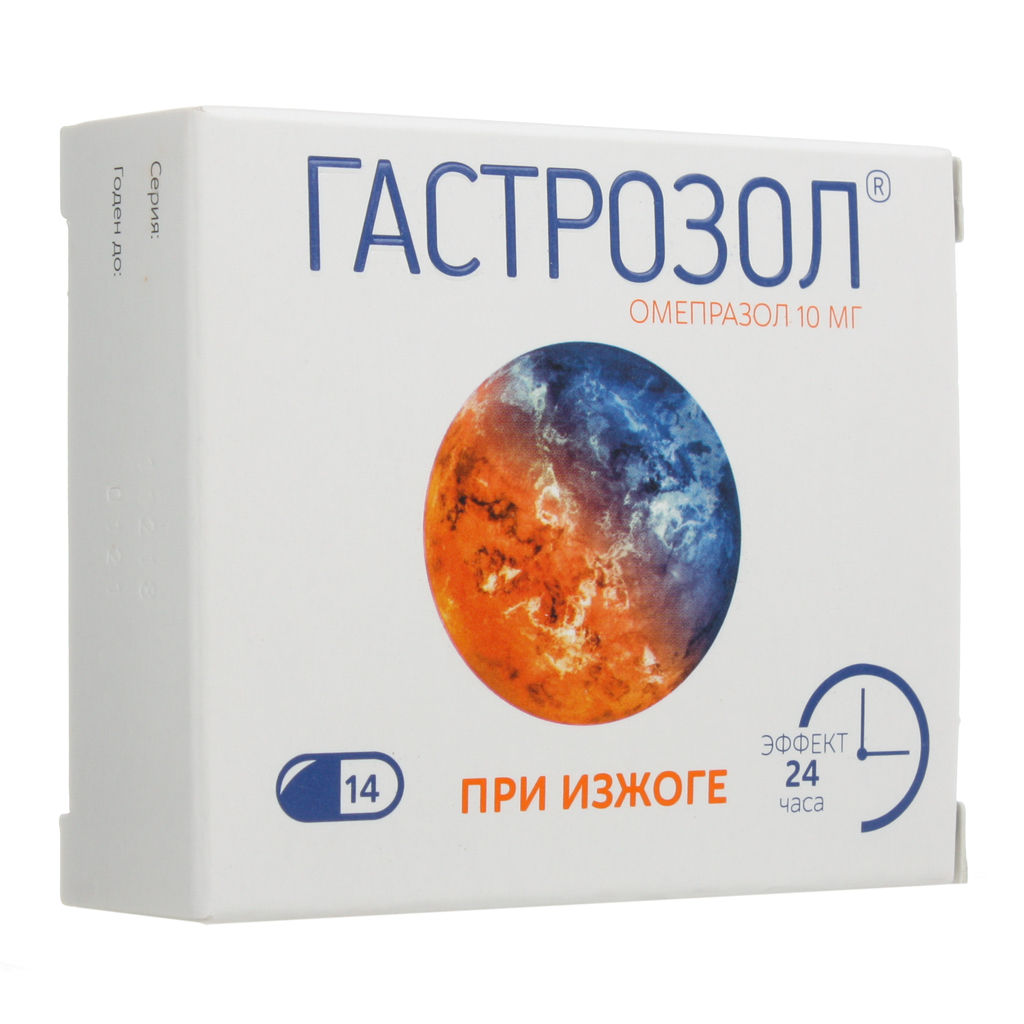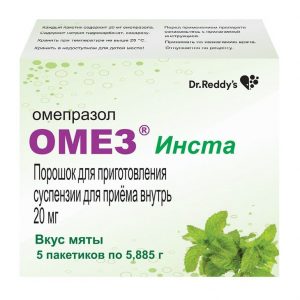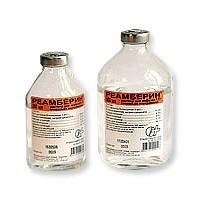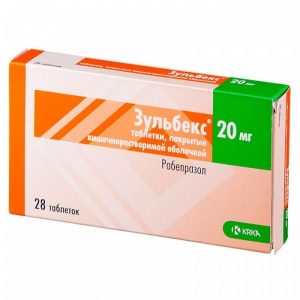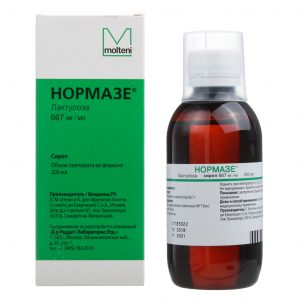Description
Release form srdlpp80 + It inhibits the activity of H + -K + -ATPase in the parietal cells of the stomach and thereby blocks the final stage of hydrochloric acid secretion.
This leads to a decrease in basal and stimulated secretion, regardless of the nature of the stimulus. Due to a decrease in acid secretion, it reduces or normalizes the effect of acid on the esophagus in patients with reflux esophagitis.
Omeprazole has a bactericidal effect on Helicobacter pylori. Eradication of H. pylori with the simultaneous use of omeprazole and antibiotics can quickly stop the symptoms of the disease, achieve a high degree of healing of the damaged mucosa and persistent long-term remission, and reduce the likelihood of bleeding from the gastrointestinal tract.
Pharmacokinetics
When administered orally, it is rapidly absorbed from the digestive tract. Penetrates into the parietal cells of the gastric mucosa. Binding to plasma proteins is about 95%, mainly with albumin. Biotransformed in the liver. It is excreted by the kidneys – 72-80%, with feces – about 20%. T1 / 2 0.5-1 h. In patients with chronic liver diseases, T1 / 2 increases up to 3 hours
Indications
Peptic ulcer of the stomach and duodenum in the exacerbation phase (including associated with Helicobacter pylori), reflux esophagitis, Zollinger-Ellison syndrome, erosive and ulcerative lesions of the stomach and duodenum associated with NSAIDs.
Contraindications
Chronic liver disease (including history), childhood, hypersensitivity to omeprazole.
Special instructions
Before starting therapy, it is necessary to exclude the possibility of a malignant process (especially with gastric ulcer), because treatment with omeprazole may mask the symptoms and delay the correct diagnosis.
Against the background of the use of omeprazole, distortion of the results of laboratory studies of liver function and plasma concentrations of gastrin is possible.
Composition
1 caps.
omeprazole pellets 117.5 mg,
which corresponds to the content of omeprazole 10 mg
Excipients:
mannitol – 19.97 mg,
sucrose – 32.11 mg,
disodium hydrogen phosphate – 1.49 mg,
sodium 0.4 mg lauryl sulfate, lauryl sulfate – 4 mg lauryl sulfate
calcium carbonate – 4 mg,
hypromellose (hydroxypropylmethylcellulose E-5) – 10.28 mg,
methacrylic acid and ethyl acrylate copolymer [1: 1] (L-30D) -29.37 mg,
propylene glycol – 0.95 mg,
di2. ,
cetyl alcohol – 0.88 mg,
sodium hydroxide – 0.18 mg,
polysorbate 80 – 0.35 mg,
povidone K30 – 0 .3 mg,
titanium dioxide – 0.21 mg,
talcum – 0.07 mg.
Hard gelatin capsule shell composition:
shell:
titanium dioxide (E 171) – 2%,
gelatin – up to 100%.
cap:
titanium dioxide (E171) – 1.3333%,
dye sunny sunset yellow (E 110) – 0.0044%,
quinoline yellow (E 104) – 0.9197%,
gelatin – up to 100%.
Dosage and administration
Individual. When taken orally, a single dose is 20-40 mg. The daily dose is 20-80 mg, the frequency of use is 1-2 times / day. The duration of treatment is 2-8 weeks.
Side effects of the
Digestive system: rarely – nausea, diarrhea, constipation, abdominal pain, flatulence.
From the side of the central nervous system: rarely – headache, dizziness, weakness.
From the hemopoietic system: in some cases – anemia, eosinopenia, neutropenia, thrombocytopenia.
From the urinary system: in some cases – hematuria, proteinuria.
From the musculoskeletal system: in some cases – arthralgia, muscle weakness, myalgia.
Allergic reactions: rarely – skin rash.
Active ingredient
Omeprazole
Terms of
pharmacies vacation without prescription
dosage form
capsules
